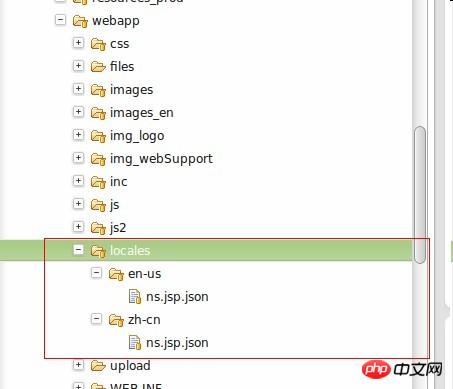
This time I will bring you jQuery.i18n to implement the web front-end internationalization standard, and jQuery.i18n to implement the web front-end internationalization standard. What are the precautions? The following are practical cases. , let’s take a look.
Before introducing jQuery.i18n.properties, let’s first take a look at what internationalization is. The English word for internationalization is: Internationalization, also known as i18n, "i" is the first letter of the word, "18" is the number of words between "i" and "n", and "n" represents the last letter of the word one letter. In computing, internationalization refers to the process of designing software that can adapt to various regional and linguistic environments. jQuery.i18n.properties is a lightweight jQuery internationalization plug-in. Similar to resource files in Java, jQuery.i18n.properties uses .properties files to internationalize Using resource files to achieve internationalization is a popular way. For example, The following is an introduction to how to use i18n in the project. To explain, my here is different from the official website. I have not used some of the methods of i18n, but only used a small part, and found out the comparison. Suitable for our project.1. First, create the resource file:

{
"reSendMail": {
"emailSendFail": "Failed to send the email",
"emailHasSendToYourEmail": "The email has be sent to your email address. "
},
"login": {
"pleaseWriteUserName": "Please input your username",
"pleaseWritePassword": "Please input your password "
},
"activeRegist": {
"thisUserEmailHasUsed":"Email has already been used",
"thisUserNameHasUsed":"User Name has already been used",
"4to30Char":"Please enter 4-30 characters",
"1to50Char":"Please enter 1-50 characters",
"1to16Linkman":"Please enter 1-16 characters",
"loginPage":"Login Page",
"EmailMustNotEmpty": "Email can't be blank",
"PWDNotEmpty": "Password can't be blank",
"nameNotEmpty":"Name can't be blank",
"conpanyNotEmpty":"Company can't be blank",
"qqNotEmpty":"QQ can not be blank",
"phoneNotEmpty":"Mobile can not be blank",
"least50charEmailAddress":"No more than 50 characters for email address",
"enterEmailAddressLikeThis":"Email address format 'abc@abc.com'",
"enter6To32Character":"Please enter 6-32 characters",
"NameMost30Character":"No more than 30 characters for name",
"QQTypeIsWrong":"Incorrent QQ format",
"phoneTypeNotCorrect":"Incorrent mobile format",
"thisEmailHasRegistered":"Email address has already been registered",
"registerFail":"Registration failed!",
"TwoTimesPWDIsDifferent":"The passwords you entered do not match. Please try again."
}
}
I won’t write it down, the format is the same, it is written in different modules in the form of map.
2. Introduce i18n.js on the jsp page and initialize i18n
var emailflag = false;
function checkemail() {
check('email', 'emailmessage');
var email = $("#email").attr("value");
if(email != null && email != "") {
if(email.length > 50) {
setpInfo("emailp", i18n.t('activeRegist.least50charEmailAddress'), 1);//请输入50字符内的邮箱地址
} else {
if(isEmail(email, $("#email"))) {
checkemailForServer(email);
} else {
setpInfo("emailp", i18n.t('activeRegist.enterEmailAddressLikeThis'), 1);//请输入邮箱地址,格式为abc@abc.com
}
}
}
}

 I believe you have mastered the method after reading the case in this article. For more exciting content, please pay attention to php Chinese Other related articles online!
I believe you have mastered the method after reading the case in this article. For more exciting content, please pay attention to php Chinese Other related articles online!
Recommended reading:
How to use Vue three-layer nested routing3 ways to dynamically load JS filesThe above is the detailed content of jQuery.i18n implements web front-end international standards. For more information, please follow other related articles on the PHP Chinese website!




